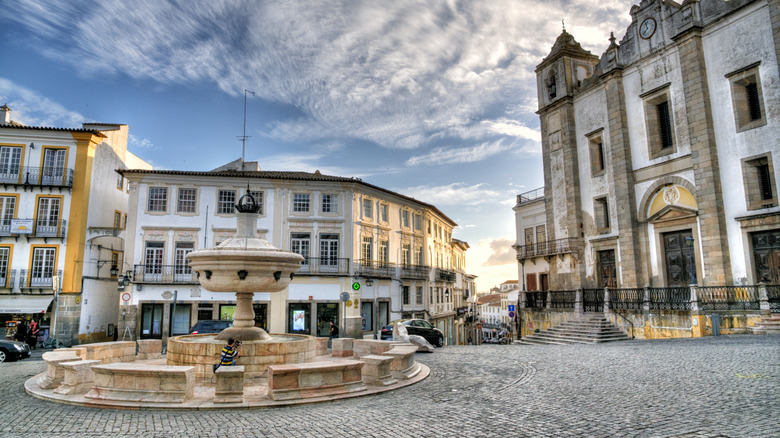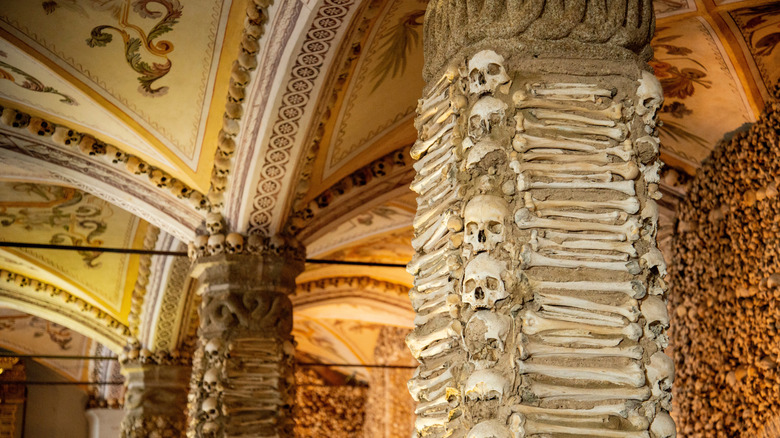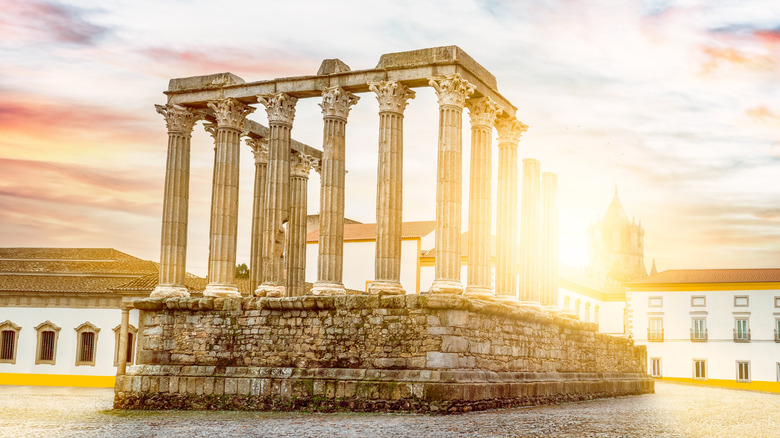Rick Steves Called This Must-See Portugal Gem A 'Proud Little Town' With Laid-Back Local Vibes
Rick Steves, an expert on the best places to visit in Europe, has strong opinions about what to see and what to skip in Portugal. For an authentic place to go, head just 83 miles east of Lisbon to one of the country's most historic cities, Évora. On his website, the travel writer describes the city as a "proud little town" with a "laid-back local scene and a hearty cuisine that makes me think of Tuscany."
Located in Portugal's southern Alentejo region, the ancient city is surrounded by vineyards, Roman ruins, and white-washed plazas. Steves admires the town's simple rhythm that doesn't seem to have changed much over the decades. Steves says, "to this day it remains a center of commerce and conviviality for country folk who come to Évora for their weekly shopping." To enjoy this city, grab a glass of red wine, sit back, and watch the world go by. The travel guru is also a fan of the untouristed town of Tomar for a perfect taste of Portugal without crowds.
Explore Évora's Gothic cathedrals and the haunting Chapel of Bones
Most of Evora's must-see sights are within walking distance of the main square, Praça do Giraldo. This lovely plaza is still the heart of the city, much like it was in the 1500s when it was first built. Look down to admire the calçada Portuguesa pavement, the intricate patterned sidewalk you'll notice in many Portuguese cities. Other notable stops include the city's marble eight-spouted fountain and the nearby cathedral.
The Cathedral of Évora is one of the largest medieval cathedrals in Portugal, less than a five-minute walk away. The Roman-Gothic style masterpiece actually took about 70 years to complete, and the craftsmanship shows. Steves recommends heading to the rooftop for the best panoramic views of the city and the surrounding countryside.
However, the site that Steves really prefers over any other is the Church of St. Francis, which he describes as "more intimate." The Chapel of Bones is what really draws the morbid-curious here. It's built with over 5,000 skulls and other bones that line the walls from the floor to the ceiling. According to Steves, it was built by monks who wanted a place for the residents to reflect on their mortality and the "transience of material things in the undeniable presence of death."
Admire ancient ruins and taste local flavors at the market
You'll see the Roman influence and ruins throughout Évora, including the old wall that surrounds the city. A short walk from the main square, you'll find one of the best-preserved ruins in Portugal: the Temple of Diana and its 14 marble Corinthian columns. "Évora was a Roman town important for its wealth of wheat and silver, as well as its location on a trade route to Rome," Steves explains. The city also has Moorish roots and was once home to Portuguese royalty during the Renaissance period.
For a taste from this time period, try queijada, a sweet cheese tart similar to a cheesecake that dates back to medieval times. It can be found at kiosks in the main parks and also at the city's farmer's market Mercado Municipal de Évora. Try the city's famous full-bodied red wine at a tasting at Cartuxa Winery.
Pair a glass with an açorda Alentejana, a hearty bread soup made with seafood or poached eggs seasoned with fresh herbs and olive oil. Or simply book a table at Taberna Típica Quarta-feira, a no-frills restaurant without a food or wine menu that serves a traditional set menu featuring an appetizer, entrée, and dessert. For a deeper dive into Alentejo cuisine, Steves emphasizes embracing the town's slow pace of life. "Linger over dinner...embrace the chance to just enjoy a ramshackle, workaday town in the countryside of Portugal," Steves says. For even more pastries and wine-matching, head to Lisbon is one of the best foodie destinations, per Rick Steves.


